WHAT WE ATE
- Soya Sauce (Shoyu) Ramen, 80/100 (CHIJMES, 14 May 2025)
- Tonkotsu Shio Ramen, 50/100 (CHIJMES, 14 May 2025)
- Bonito Ramen, 70/100 (Tanjong Pagar, 13 Jan 2024)
- Tonkotsu Standard, 80/100 (Tanjong Pagar, 13 Jan 2024)
- Tonkotsu Black, 85/100 (Tanjong Pagar, 13 Jan 2024)
If you’re in search of an authentic and classic Tonkotsu ramen experience, this is the place you should definitely visit. Having tried Ikkousha in Japan, albeit not in Hakata, along with numerous other Tonkotsu ramen establishments, we can confidently say that the taste at the Singapore Ikkousha outlet closely resembles what we experienced in Japan.
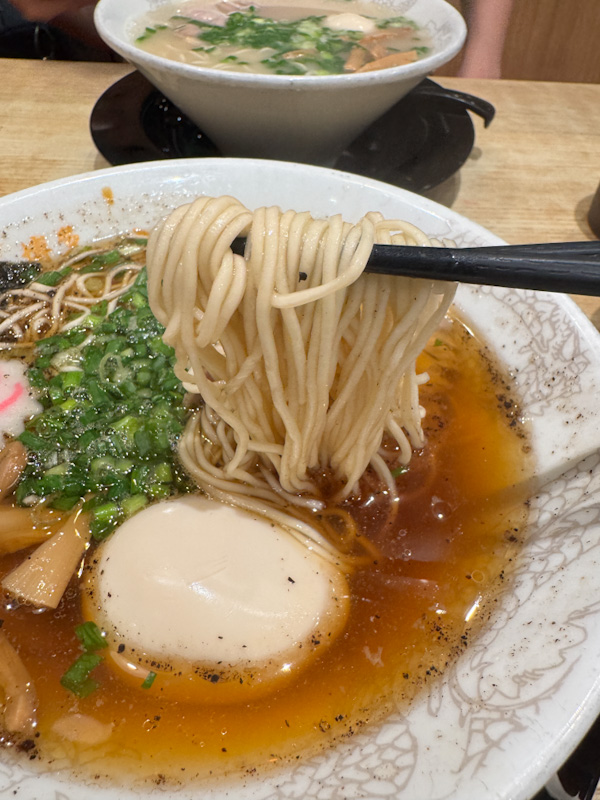
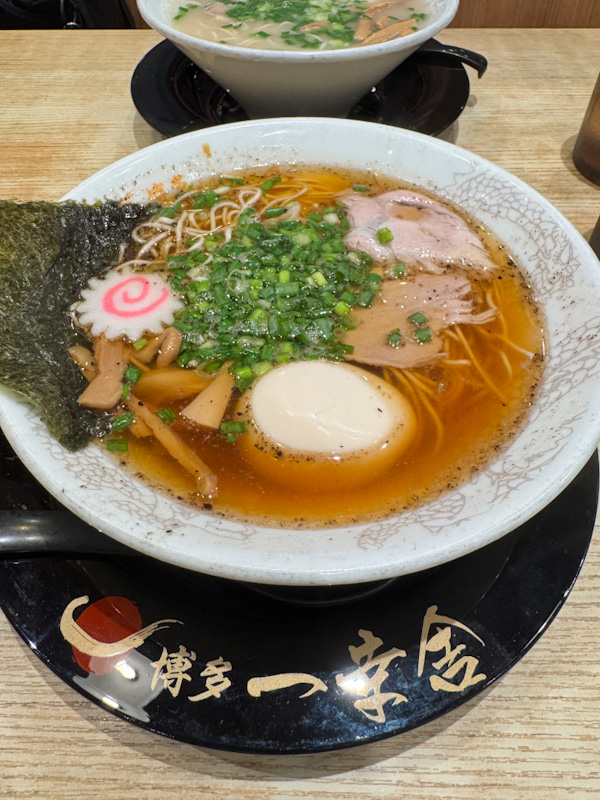
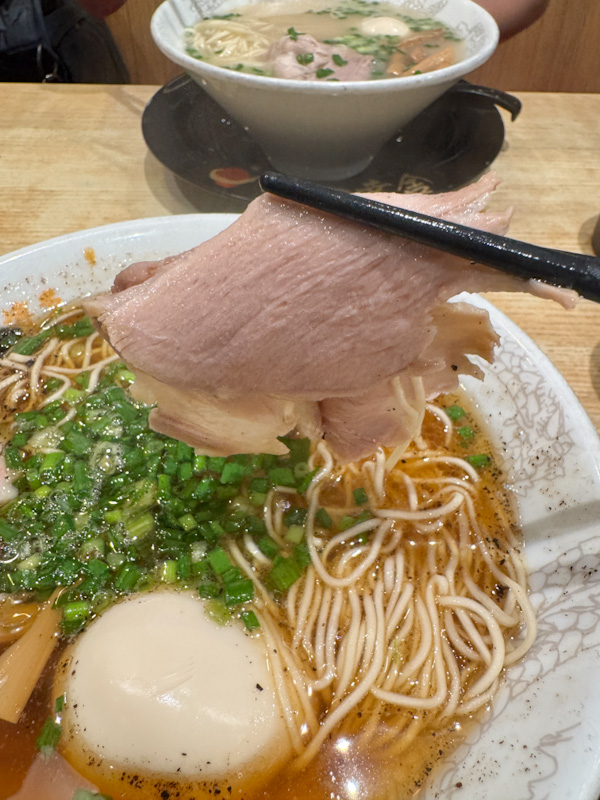
SHOYU RAMEN: 80/100
Noodle: 35/35
Even though this is a Shoyu Ramen, they’ve gone with thin, straight Hakata-style noodles—low hydration, pale yellow, and just the right texture. I ordered mine extra hard, and they arrived nearly al dente, with that slightly tooth-sticking bite that’s addictive. The noodles deliver a satisfying robust wheat flavour without any unpleasant alkaline notes. Unexpected choice of noodle for a Shoyu base, but it worked.
Soup: 30/35
The broth comes in waves. At first sip, the Shoyu feels like it’s hiding—subtle, mellow. What hits you first is a soft, clean sweetness (possibly sardine or niboshi), paired with the gentle aroma of chicken oil. The umami rolls in next, carrying a smooth, mellow Shoyu base with light peppery hints and a faint tang on the finish.
Then comes phase two: when you’re left with just the soup at the end, the Shoyu finally steps up. It’s deeper, punchier, tangier—like the real flavour has finally revealed itself. A clever, evolving broth that keeps things interesting throughout. (or maybe just my tongue playing tricks today)
Meat: 10/20
Same old story. The chashu is thin, dry, and a little too porky. It’s firm to the point of being slightly tough, and lacks any melt-in-your-mouth richness. Not offensive, just boring—and definitely the weakest link in an otherwise strong bowl.
Topping: 5/10
The usual suspects make an appearance:
- Naruto fish cake for tradition and a pop of colour
- Menma (bamboo shoots)—tender but sharp, with a slightly pungent saltiness
- Nori, which does a nice job soaking up and re-releasing umami
- Negi, sadly flat and dried out
- Ajitama (egg)—a little too salty for this lighter broth, but decent texture
Summary: A satisfying bowl anchored by excellent noodles and an intriguingly layered broth. The soup may start mellow, but it rewards those who stay till the end. The chashu needs a rethink, and the toppings could use a refresh—but for noodle and soup lovers, this one’s a quiet winner.
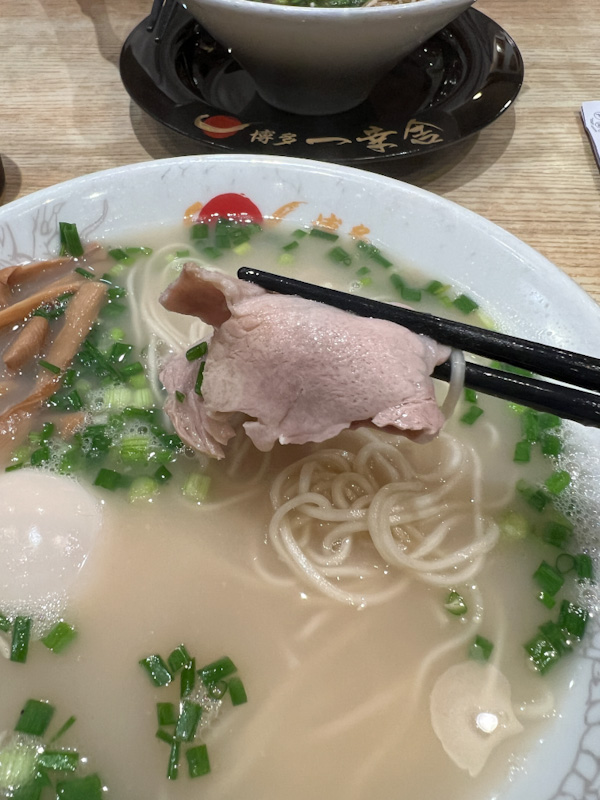
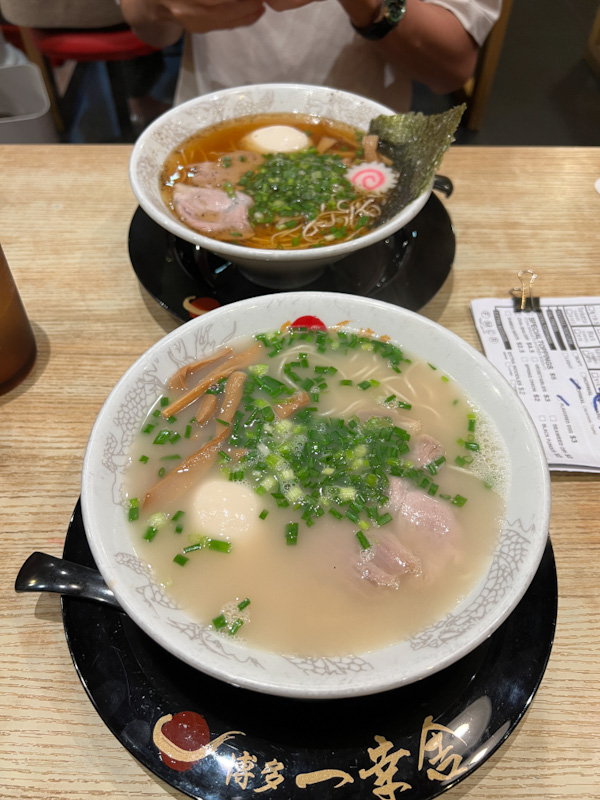
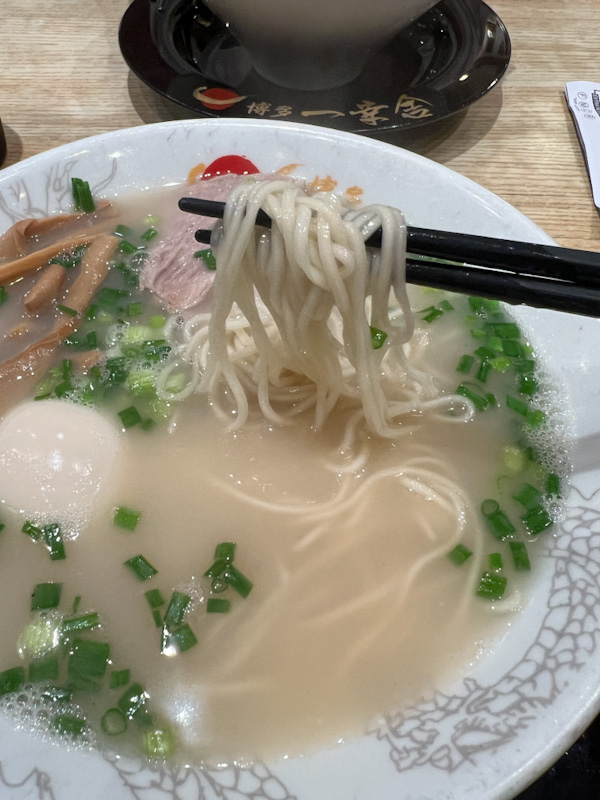
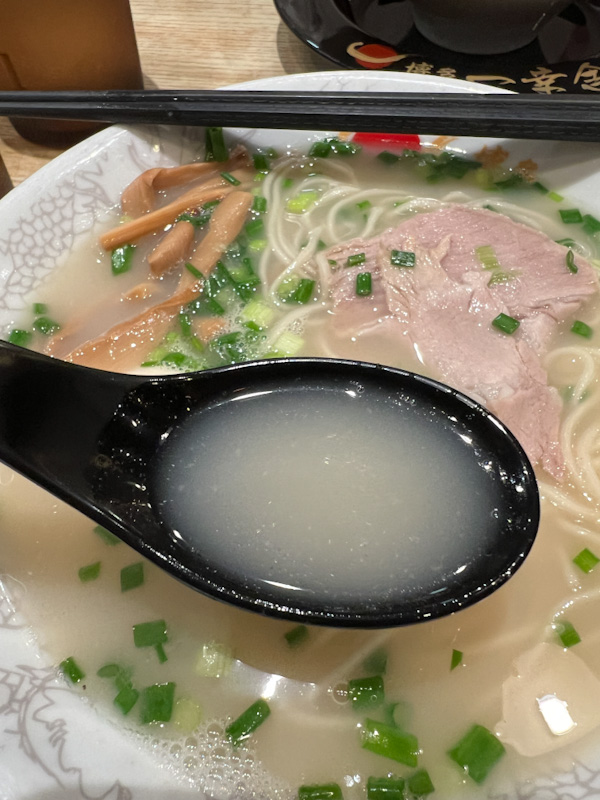
TONKOTSU SHIO RAMEN: 50/100
Noodle: 35/35
Same Hakata-style noodles as their Shoyu—low hydration, thin, pale yellow, and full of character. This time, I opted for soft, and they came just as requested: pliable yet still snappy, with that slightly tooth-sticking bite that makes these noodles such a joy. The wheat flavour is full and robust, and there’s no trace of unpleasant kansui bitterness. As always, the noodles are the star.
Soup: 5/35
Unfortunately, the broth was a letdown. A Tonkotsu Shio hybrid sounds interesting in theory—but here, it felt like the worst of both worlds. The result tasted like a thinned-out version of their regular Tonkotsu, with a faint chicken-ish note and barely any trace of shio’s usual sweetness or clarity. Instead of balance, the soup was watery, porky, and oddly bland. It’s technically lighter, but not in a good way—just flat, with a slightly unpleasant porky linger. Easily the weakest broth in their lineup.
Meat: 10/20
Same old chashu. Thin, dry, and a touch too porky. It’s firm—borderline tough—and doesn’t offer much in the way of juiciness or flavour complexity. At this point, it’s just filler.
Topping: 0/10
Toppings feel like an afterthought here:
- Menma (bamboo shoots)—salty, slightly pungent, but nothing special
- Negi—dull, dried out, and lifeless
- Ajitama (egg)—the same overly salty seasoning, which clashes with the already-weak broth
Summary: The only thing really enjoyable in this bowl is its noodles. Everything else—from the underpowered, confused broth to the uninspired toppings—feels phoned in. If you’re a noodle purist, it’s still enjoyable. But as a complete bowl of ramen? It misses the mark badly.


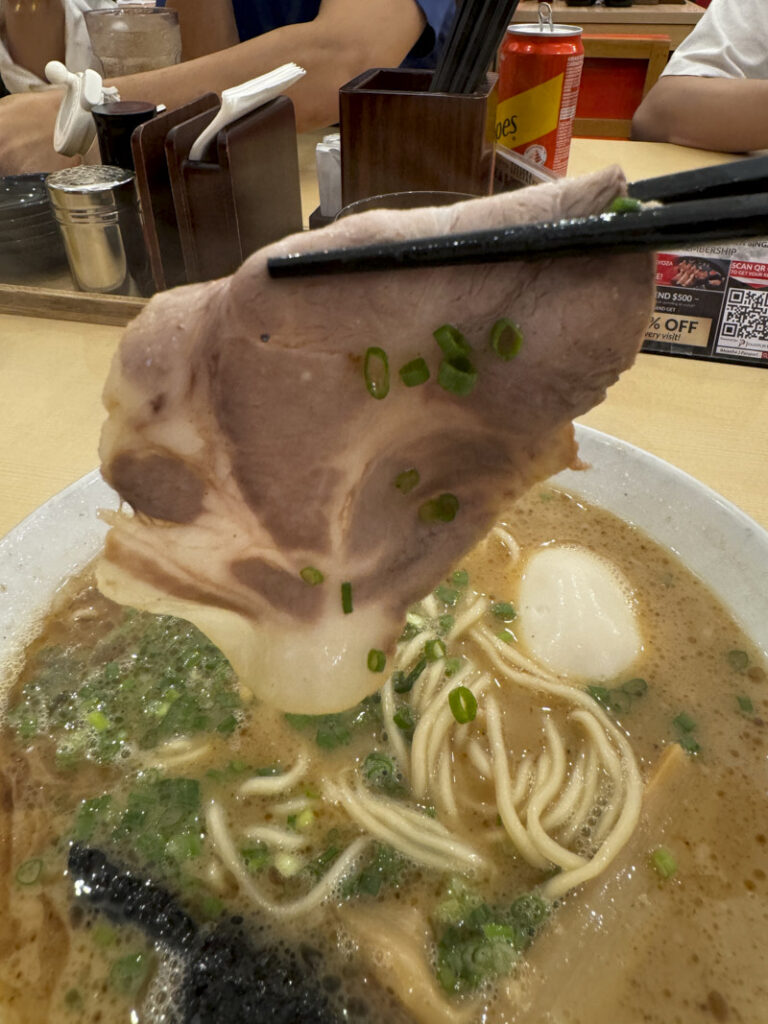
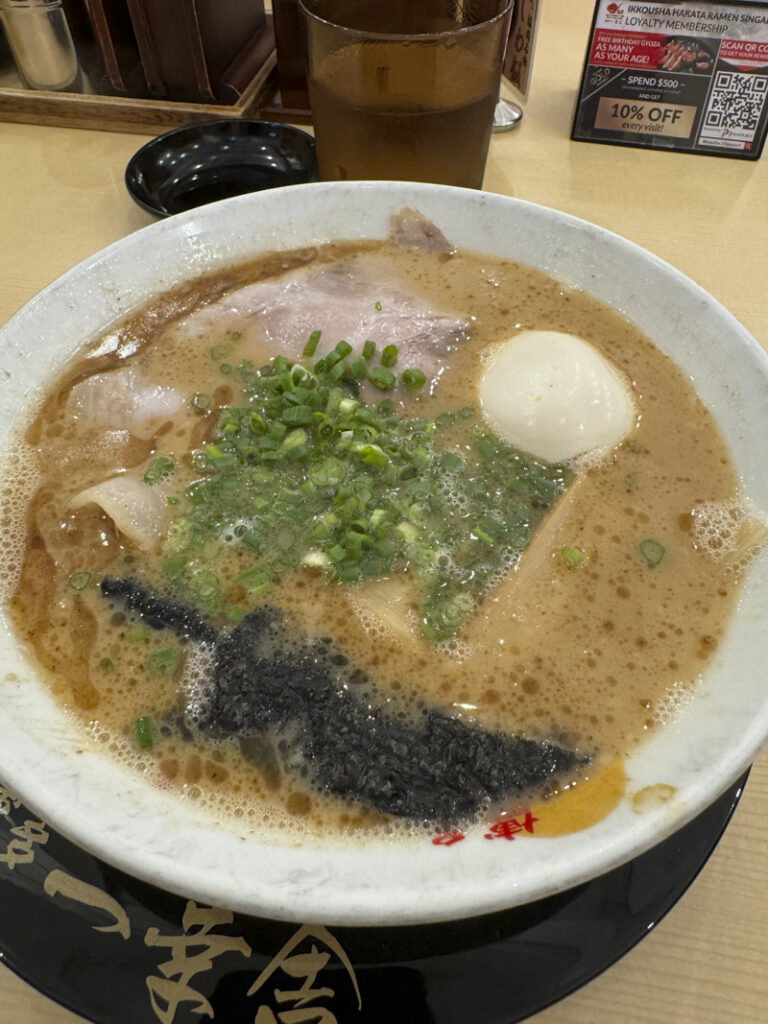
BONITO RAMEN: 70/100
Noodle: 25/35
The noodles chosen are of medium thickness and slightly wavy in shape. Offering a firm and chewy bite, they exude a delightful earthy richness. However, there’s a subtle presence of an unpleasant kansui taste, reminiscent of yellow noodles.
Soup: 30/35
The soup boasts a bold Bonito flavor right from the start, gradually releasing its aromatic, sweet umami, and savory notes, which linger pleasingly in the mouth. Creamy and cloudy, with a discernible layer of oil, it’s a complex concoction enhanced by a notable shoyu infusion. This rich amalgamation of Chicken, Bonito, and Pork creates a flavor profile worth savoring.
Meat: 10/20
The meat appears to be a cut of pork shoulder, featuring a generous amount of fat. While the meat could benefit from a stronger marination, and the fatty portions could be a touch more tender, the thinly sliced presentation complements the overall texture well.
Topping: 5/10
Additional toppings include seaweed, negi, and exceptionally tender bamboo shoots. Although the shoots are notably tender, they lean slightly towards the salty side, impacting the overall balance of flavors.
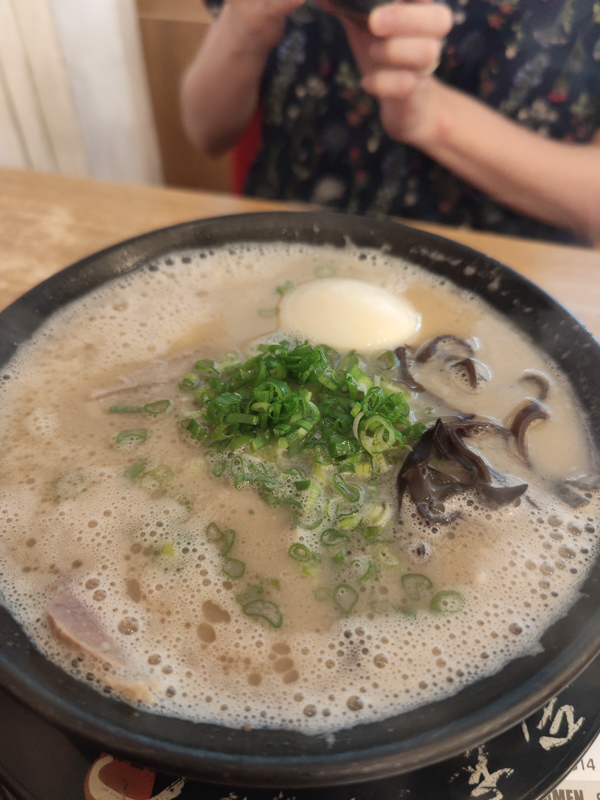
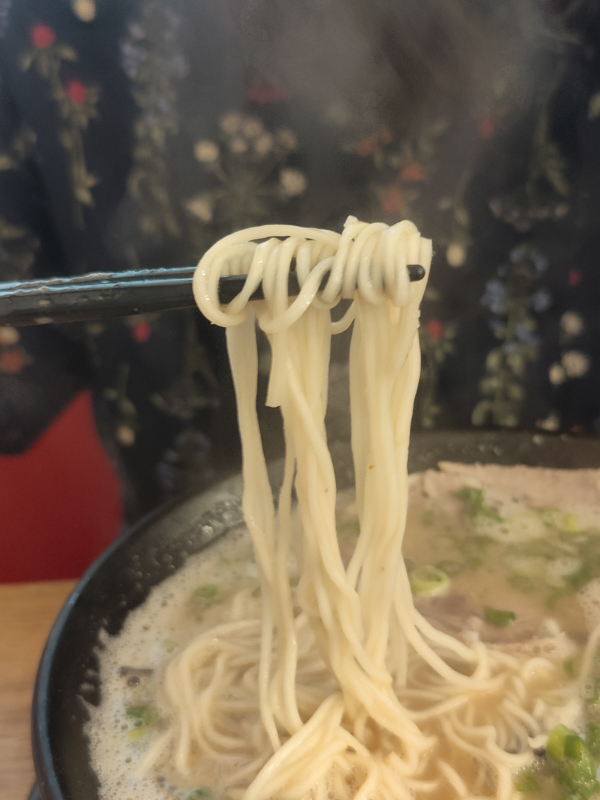

TONKOTSU STANDARD: 80/100
Noodle: 35/35
One of our absolute favorites! The Hakata-style noodles are thin and straight, as expected. What sets them apart is their delightful taste, with a subtle lingering aroma and umami flavor. Regardless of whether we choose the firm or soft option, the noodles always provide a satisfying bite and a pleasant texture.
Soup: 30/35
The broth is frothy, with a thin layer of emulsified fat on top that adds to its richness. Ikkousha consistently delivers one of the most indulgent Tonkotsu broths we’ve ever encountered, even surpassing the claims of Bari Uma. It leaves a classic sticky residue on your lips and boasts a wonderfully thick consistency. However, be aware that the pork flavor can be quite pronounced, which may not suit everyone’s taste. Overall, this Tonkotsu broth is undeniably solid.
Meat: 10/20
The meat, unfortunately, falls a bit short. It is thinly sliced and tends to be chewy, especially the fatty parts, which can be a bit challenging to tear apart in certain areas. Some improvements in this aspect would greatly enhance the overall experience.
Toppings: 5/10
The eggs are skillfully prepared and leave a lingering savory aftertaste that complements the dish well. The ample serving of black fungus and negi (spring onion) adds a satisfying crunch. However, when considering the toppings as a whole, they don’t contribute much in terms of layering flavors or creating a more intricate taste profile.

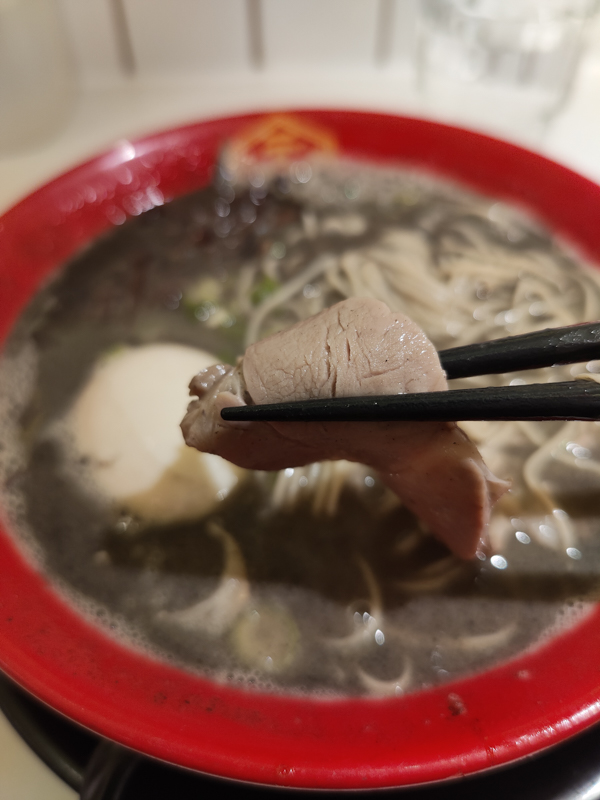

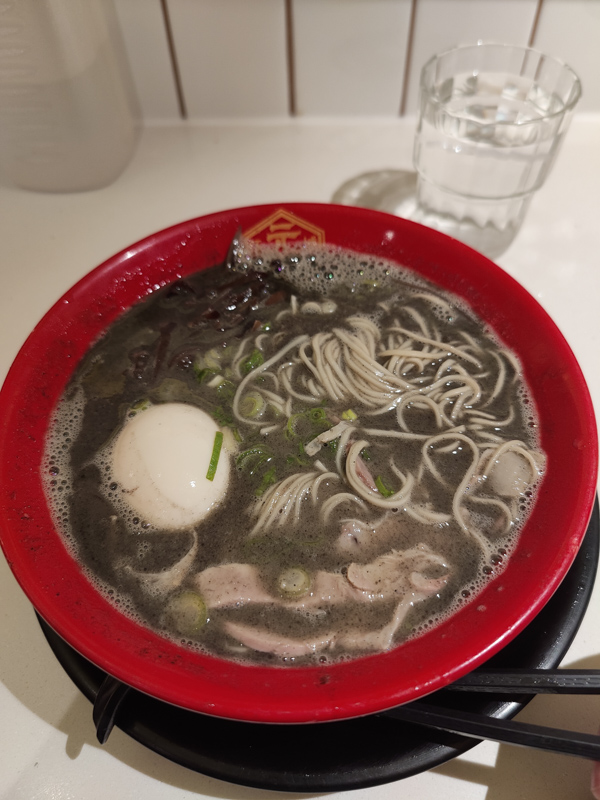
TONKOTSU BLACK: 85/100
Noodle: 35/35
Just like the previous variation, the Hakata-style noodles here are thin and straight, which we absolutely love. What sets these noodles apart is their remarkable taste, featuring a subtle lingering aroma and a delightful umami flavor. Furthermore, regardless of whether we choose the firm or soft option, these noodles consistently provide a satisfying bite and an enjoyable texture.
Broth: 35/35
The broth remains consistent with the frothy and umami-rich Tonkotsu base we’ve come to appreciate. However, in this variation, it is infused with black garlic oil, adding a distinctive garlic aroma. Unlike some other “black” variants available, there is no burnt taste here, but rather a more prominent garlic presence. This rendition offers a delightful twist on the classic Tonkotsu black, particularly appealing to garlic enthusiasts and those who prefer a stronger flavor profile.
Meat: 10/20
Similar to the previous variation, the meat could benefit from some improvements. It is thinly sliced and tends to be slightly chewy, especially the fatty parts, making it challenging to tear the meat apart in certain areas. Enhancements in this aspect would elevate the overall experience.
Toppings: 5/10
As mentioned earlier, the eggs are skillfully prepared, leaving a lingering savory aftertaste that enhances the overall dish. The generous portion of black fungus and negi (spring onion) adds a pleasant crunch to the meal. However, when considering the toppings as a whole, they don’t contribute significantly to layering more flavors or creating a more complex taste profile.
DISCLAIMER
One man’s meat is another man’s poison.
Find out more about our palettes and how we evaluate our ramen here. 😉

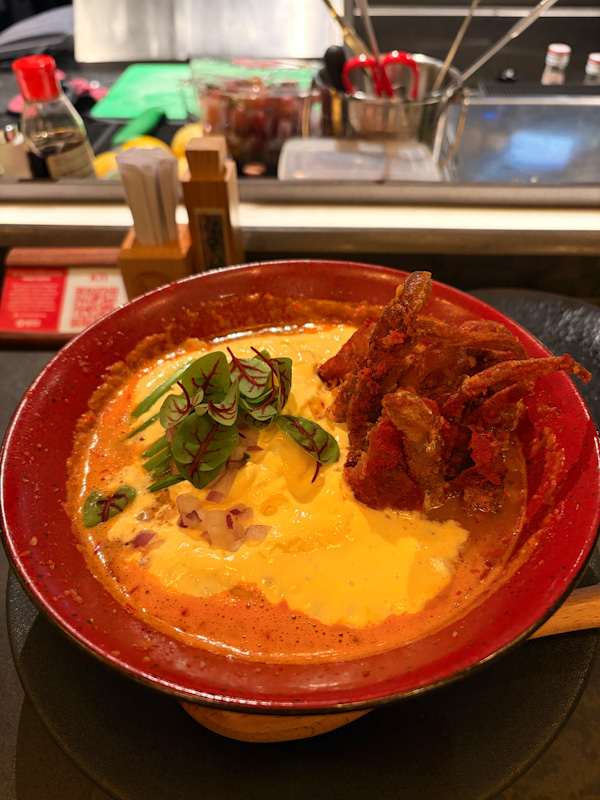
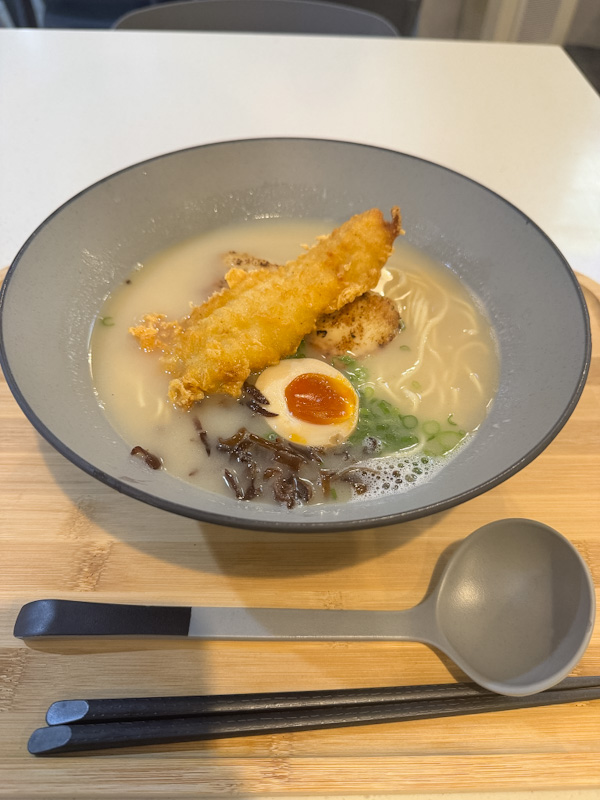
Pingback: Review of Nantsuttei Ramen
Pingback: Review of Tonkotsu Ikkyu Ramen - 75/100
Pingback: Review Of Konjiki Hototogisu
Pingback: Review of Ramen Hitoyoshi
Pingback: Review of Keisuke Tonkotsu King Ramen
Pingback: Review of Hakata Ikkousha Sohonten (Fukuoka, Japan)